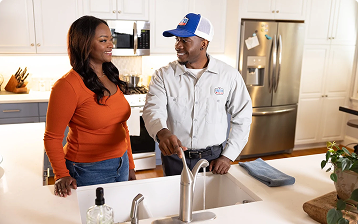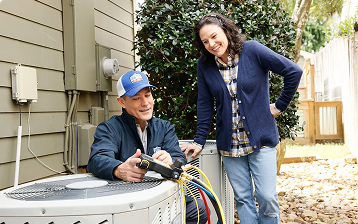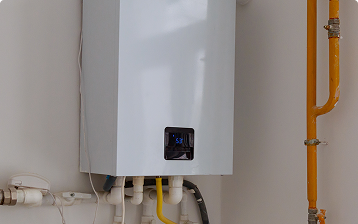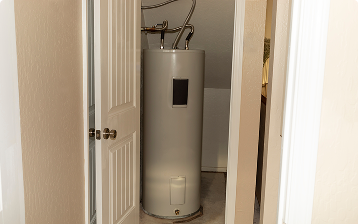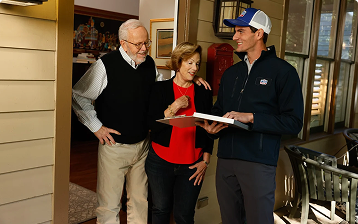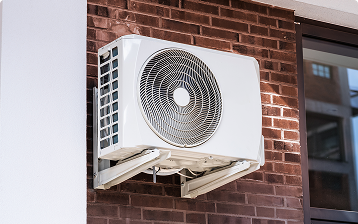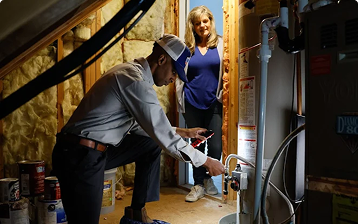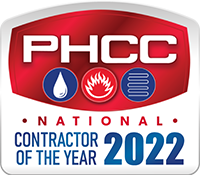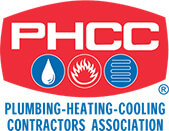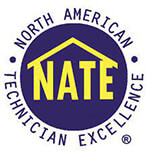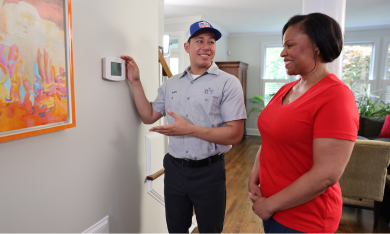
Got a weird noise coming from your pipes? Wondering if that slow drain needs a plumber—or just a plunger? At United Air Temp, we’ve seen it all and are always ready with plumbing advice you can count on.
We proudly serve Baltimore with quality work and a team that treats you like family. Here are the plumbing questions we hear most—and the clear, helpful answers homeowners actually want.
How Do I Use a Plumbing Snake?

A plumbing snake—also known as a drain auger—is a flexible tool designed to break up clogged drains. It’s a great option when a plunger isn’t working and can help you avoid a call to the plumber for minor blockages.
Here’s how to use it:
- Insert the snake slowly into the drain opening or toilet bowl.
- Rotate the handle clockwise to help the coil work its way through the pipe.
- Apply gentle pressure as you feed the snake further in—don’t force it.
- When you feel resistance, keep turning to break up or latch onto the clog.
- Retract the snake carefully once the blockage is cleared.
- Flush the drain with hot water to rinse away any remaining debris.
Be sure to clean the snake after use—and wear gloves, because things can get messy!
How Much Does a Plumber Cost?
 The cost of a plumber can vary quite a bit depending on where you live, the type of job, and when you need the service. Whether it’s a quick fix or a major repair, it’s helpful to know what to expect before you pick up the phone.
The cost of a plumber can vary quite a bit depending on where you live, the type of job, and when you need the service. Whether it’s a quick fix or a major repair, it’s helpful to know what to expect before you pick up the phone.
Here’s a general breakdown:
- Hourly rates usually range from $45 to $200, depending on experience, location, and job complexity.
- Flat fees are often charged for common tasks such as toilet installations, drain cleanings, and garbage disposal replacements.
- Emergency or after-hours service can come with a premium, sometimes doubling the base rate.
Always ask for an estimate upfront and clarify whether pricing is hourly or fixed—this will help avoid surprises and keep your project on budget.
Does Homeowner’s Insurance Cover Plumbing?
 Homeowner’s insurance usually covers sudden and accidental plumbing issues, like a burst pipe that floods your basement. But it won’t cover problems caused by wear and tear, corrosion, or poor maintenance.
Homeowner’s insurance usually covers sudden and accidental plumbing issues, like a burst pipe that floods your basement. But it won’t cover problems caused by wear and tear, corrosion, or poor maintenance.
For added protection, you might need separate coverage for sewer backups or water damage—check with your provider to see what’s included in your policy.
How Do I Plumb a Shower Drain?
 Installing a shower drain the right way is key to preventing leaks and keeping sewer gases out of your bathroom. It’s a job that requires careful alignment and testing before sealing things up.
Installing a shower drain the right way is key to preventing leaks and keeping sewer gases out of your bathroom. It’s a job that requires careful alignment and testing before sealing things up.
Here are the basic steps:
- Plan for proper slope: Your drain pipe should slope at ¼-inch per foot toward the main line to ensure efficient drainage.
- Install a P-trap: This U-shaped pipe goes directly under the shower drain and is essential for blocking sewer odors.
- Secure the drain assembly: Attach the drain fitting to the shower base and connect it to the P-trap.
- Test for leaks: Run water through the system before closing up the floor or adding tile to catch any problems early.
- Seal everything in place: Once you’re sure there are no leaks, secure and seal the drain to finish the job.
Getting the slope and connections right is crucial, so if you’re unsure, it’s always okay to call in a professional.
What Does FIP Mean in Plumbing?
FIP stands for Female Iron Pipe, which just means the threads are on the inside of the fitting. You’ll often see FIP connections on things like faucets and water heaters.
They’re made to screw onto MIP (Male Iron Pipe) fittings, which have threads on the outside—kind of like puzzle pieces that fit together to keep your plumbing connections tight and leak-free.
How Much Does a Plumber Charge to Replace a Toilet?
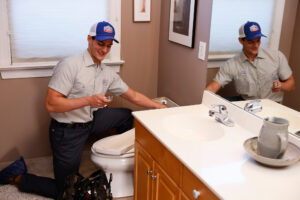
Hiring a plumber to replace a toilet typically costs $125 to $350, depending on local rates and the complexity of the job. Damage to the flange or flooring can bump up the total.
While DIY plumbing might seem like a money-saver, one wrong move can lead to leaks, water damage, or an unstable toilet—costing you more in the long run.
How Do I Plumb a Toilet?
 Installing a toilet might look simple, but getting it wrong can lead to messy leaks, wobbly fixtures, or worse—damage to your floor. Unless you’re confident in your DIY plumbing skills, this is one job where a pro can save you stress and cleanup.
Installing a toilet might look simple, but getting it wrong can lead to messy leaks, wobbly fixtures, or worse—damage to your floor. Unless you’re confident in your DIY plumbing skills, this is one job where a pro can save you stress and cleanup.
Here are the basic steps:
- Attach the closet flange to the drainpipe and secure it firmly to the floor.
- Place a wax ring on top of the flange to create a watertight seal.
- Set the toilet bowl carefully over the flange, making sure it’s aligned.
- Bolt the toilet down to secure it, but don’t overtighten.
- Connect the water supply line and turn the water back on.
A small mistake here can cause long-term issues, so when in doubt, it’s worth calling a plumber.
How Do I Plumb a Water Softener?

Installing a water softener isn’t the most complicated plumbing task—but it does involve cutting into your main water line, so it’s not the easiest plumbing job either.
Done wrong, it can lead to leaks or poor performance, which defeats the purpose of having one in the first place.
Here’s a quick overview of the steps:
- Choose a location near your main water line and close to the water heater.
- Connect the inlet and outlet pipes using the proper fittings—be sure the flow direction matches the labels.
- Run a drain line from the unit to a nearby floor drain or utility sink for backwashing cycles.
- Add an overflow line from the brine tank to prevent flooding in case of overfill.
If you’re not comfortable with pipe cutting or water shut-offs, this is one of those jobs best left to a licensed plumber.
How Do I Plumb a Bathroom?
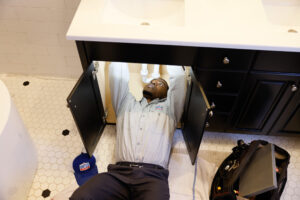
Plumbing a bathroom is a big job and one of the trickiest plumbing projects. With so many fixtures, pipes, and codes to follow, it’s easy to make mistakes that can lead to leaks, slow drains, or, worse, sewer gas backing into your home.
Here’s what’s involved:
- Plan the layout for your toilet, sink, tub, and/or shower, including drain and water supply lines.
- Follow rough-in dimensions for each fixture to make sure everything lines up correctly.
- Install proper venting to keep sewer gases out and ensure drains flow smoothly.
- Check local codes to make sure your setup is safe and legal.
How Do I Plumb a Kitchen Sink?
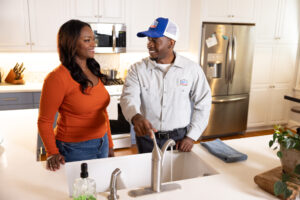
Plumbing a kitchen sink involves connecting drain and water lines and often integrating appliances like a dishwasher and garbage disposal. With the right tools and a clear plan, it’s a project many homeowners can handle confidently.
Here’s what the process typically includes:
- Install a P-trap beneath the sink. This curved section of pipe holds water to block sewer gases from entering your kitchen.
- Connect appliance drain lines if you have a dishwasher or garbage disposal. These usually tie into the sink drain using special fittings or branch connections.
- Seal all connections Use Teflon tape on threaded joints to prevent leaks and plumber’s putty around sink flanges to ensure watertight seals.
How Does a Plumber Find a Water Leak Underground?
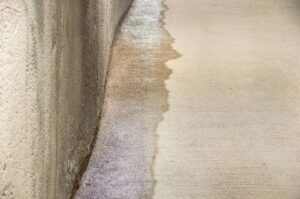 When there’s a hidden water leak underground, plumbers use special tools to track it down without tearing up your yard. They might use listening devices to hear water escaping from pipes or do a pressure test to see which part of the line is leaking.
When there’s a hidden water leak underground, plumbers use special tools to track it down without tearing up your yard. They might use listening devices to hear water escaping from pipes or do a pressure test to see which part of the line is leaking.
For tough cases, they can use tracer gas or infrared cameras to find the exact spot. These tools help locate the problem quickly and accurately—so repairs can be made with as little digging as possible.
How Long Does Copper Plumbing Last?
 Copper plumbing is known for its durability and can last 50 to 70 years under normal conditions. However, factors like acidic water, high pressure, or poor installation can shorten its lifespan. Having your pipes inspected regularly helps catch corrosion early and prevent costly leaks down the road.
Copper plumbing is known for its durability and can last 50 to 70 years under normal conditions. However, factors like acidic water, high pressure, or poor installation can shorten its lifespan. Having your pipes inspected regularly helps catch corrosion early and prevent costly leaks down the road.
Do I Need a Plumber to Replace an Outdoor Spigot?
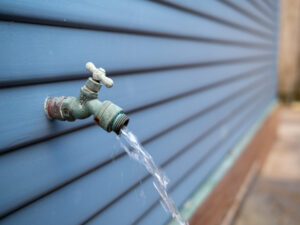 If you can shut off the water and easily reach the connection, you can replace an outdoor spigot yourself. Just use a wrench and thread tape to install the new spigot tightly.
If you can shut off the water and easily reach the connection, you can replace an outdoor spigot yourself. Just use a wrench and thread tape to install the new spigot tightly.
However, if the job involves soldered joints or pipes hidden behind walls or siding, it’s best to call a plumber to avoid damaging your plumbing or your home.
Does a Plumber Replace Pipes?
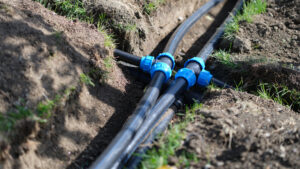 Yes, plumbers handle everything from small pipe repairs to full-home repiping. Depending on where the pipes are located, the job might involve cutting into walls, floors, or crawl spaces to access them.
Yes, plumbers handle everything from small pipe repairs to full-home repiping. Depending on where the pipes are located, the job might involve cutting into walls, floors, or crawl spaces to access them.
For bigger pipe replacement projects, you may also need permits and inspections to meet local plumbing codes. It’s a job best left to licensed professionals to ensure everything’s done safely and up to standard.
Do You Need Help with Your Plumbing?
At United Air Temp, our plumbers are highly trained experts who complete over 40 hours of hands-on training every year—so you’re always in good hands.
We keep things simple with upfront pricing and clear communication, including a written report of everything we do. No guesswork, no surprises—just solid, honest plumbing service.
Skip the stress and the guesswork—contact us today and let United Air Temp handle your plumbing needs in Baltimore.
More Info on Plumbing
- What To Do If a Water Supply Pipe Bursts?
- Can a Tankless Water Heater Freeze in Winter?
- Do I Need Home Water Treatment in Baltimore?
- What Services Does United Air Temp Offer in the Baltimore Area?
- What Cities Does United Air Temp Service in Maryland?
- Can I Get Sewer Repair or Replacement in the Winter in Baltimore?
- What To Do if Your Pipes Freeze
- Why Your 1990s Maryland Home Might Need New Pipes




